The St. Louis Rams possessed one of the league’s best offenses during a six-year stretch (1999-2005) that was dubbed the “Greatest Show on Turf.” At its peak, the Rams’ offense was arguably the most explosive in NFL history.
The offense was headlined by several NFL greats such as Kurt Warner, Marshall Faulk, Isaac Bruce, and Torry Holt. However, one player that doesn’t receive enough recognition being a part of their high-octane offensive machine was receiver Az-Zahir Hakim.
Hakim was drafted by the Rams with the 96th overall pick in the fourth round of the 1998 NFL draft out of San Diego State. He spent four years playing for the Aztecs, finishing eighth all-time in receiving yards (2,622), ninth in receptions (147) and fifth in total touchdowns (21).
He entered the NFL with the reputation of a multifaceted speedster receiver that excelled in the slot on offense, and could impact the game greatly on special teams as a punt returner.
In his rookie season, Hakim played sparingly in a limited role, with just 20 catches for 247 receiving yards and a touchdown. The following year, he made more of an impact with possibly his best professional season by recording 36 catches for 677 receiving yards and eight touchdowns.
Along with his increased role in the offense, Hakim was a huge factor in the return game, totaling 461 yards with one touchdown on 44 punts returned. It was a historic season for the Rams’ wideout as he had arguably the best game of his career against the Cincinnati Bengals becoming just the fourth player in team history to score three touchdowns in a single game. Hakim joined the likes of Bob Shaw (1949), Elroy “Crazy Legs” Hirsch (1951), and Harold Jackson (1973).
He also recorded other memorable moments in the 1999 season, such as his 84-yard punt return for a touchdown that tied for the fifth longest in team history, setting the team record with 147 punt return yards in a single game, and becoming the first Rams’ player to record three receiving touchdowns in a single game since Eddie Kennison did so in the 1996 season.
Hakim also contributed to the Rams’ Super Bowl championship playoff run with eight catches for 93 receiving yards and had 90 return yards on eight punts returned in three games played.
He played the next two seasons for the Rams continuing to be a valuable piece to the team’s offense and special teams. He posted career highs in receptions (53), receiving yards (734), and an NFC-best 15.8 punt return yard average in the 2000 season, but all of that was overshadowed by his muffed punt in the final minutes of the playoff game against the New Orleans Saints that allowed them to run the clock out for a win over the Rams.
Hakim was productive in his final season with St. Louis finishing with 39 catches for 374 receiving yards. He passed another team history mark becoming the fourth player to get more than 1,000 career punt return yards joining Kennison, Henry Ellard, and Leroy Irvin. He was also a huge contributor during the playoffs with 11 catches for 149 receiving yards.
His best performance during the playoffs came in Super Bowl XXXVI 20-17 loss to the New England Patriots where he had five catches for 90 receiving yards.
Following that season, Hakim signed with the Detroit Lions where he spent four out of his last five seasons in the NFL. He had his best season with Detroit in 2003 with 49 catches for 449 receiving yards and four touchdowns. Hakim also had a short stint with the Miami Dolphins in 2007, and he played in the UFL with the Las Vegas Locomotives during the 2009 season.
Ultimately, Hakim will most be remembered for his time with the Rams, where he established himself as a one of the vital pieces to the one of the most explosive offenses in NFL history. It may have been only over a four-year span, but his contributions to the team played an important part in helping them reach two Super Bowls and win the first championship in franchise history.
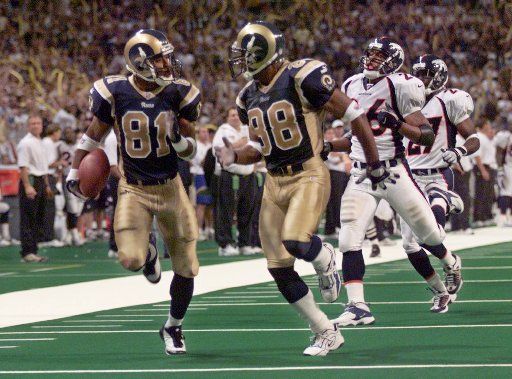

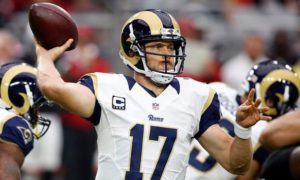

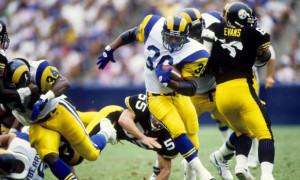





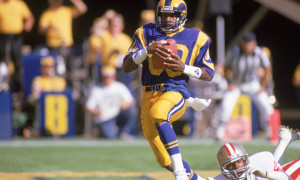

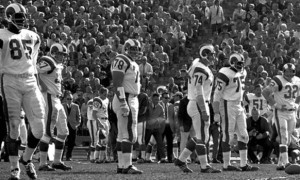

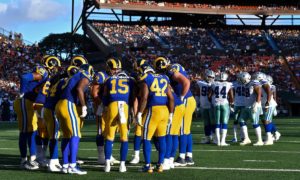





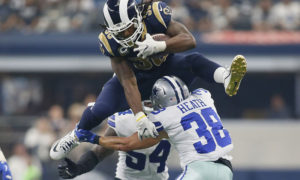

The St. Louis Rams possessed one of the league’s best offenses during a six-year stretch (1999-2005) that was dubbed the “Greatest Show on Turf.” At its peak, the Rams’ offense was arguably the most explosive in NFL history.
The offense was headlined by several NFL greats such as Kurt Warner, Marshall Faulk, Isaac Bruce, and Torry Holt. However, one player that doesn’t receive enough recognition being a part of their high-octane offensive machine was receiver Az-Zahir Hakim.
Hakim was drafted by the Rams with the 96th overall pick in the fourth round of the 1998 NFL draft out of San Diego State. He spent four years playing for the Aztecs, finishing eighth all-time in receiving yards (2,622), ninth in receptions (147) and fifth in total touchdowns (21).
He entered the NFL with the reputation of a multifaceted speedster receiver that excelled in the slot on offense, and could impact the game greatly on special teams as a punt returner.
In his rookie season, Hakim played sparingly in a limited role, with just 20 catches for 247 receiving yards and a touchdown. The following year, he made more of an impact with possibly his best professional season by recording 36 catches for 677 receiving yards and eight touchdowns.
Along with his increased role in the offense, Hakim was a huge factor in the return game, totaling 461 yards with one touchdown on 44 punts returned. It was a historic season for the Rams’ wideout as he had arguably the best game of his career against the Cincinnati Bengals becoming just the fourth player in team history to score three touchdowns in a single game. Hakim joined the likes of Bob Shaw (1949), Elroy “Crazy Legs” Hirsch (1951), and Harold Jackson (1973).
He also recorded other memorable moments in the 1999 season, such as his 84-yard punt return for a touchdown that tied for the fifth longest in team history, setting the team record with 147 punt return yards in a single game, and becoming the first Rams’ player to record three receiving touchdowns in a single game since Eddie Kennison did so in the 1996 season.
Hakim also contributed to the Rams’ Super Bowl championship playoff run with eight catches for 93 receiving yards and had 90 return yards on eight punts returned in three games played.
He played the next two seasons for the Rams continuing to be a valuable piece to the team’s offense and special teams. He posted career highs in receptions (53), receiving yards (734), and an NFC-best 15.8 punt return yard average in the 2000 season, but all of that was overshadowed by his muffed punt in the final minutes of the playoff game against the New Orleans Saints that allowed them to run the clock out for a win over the Rams.
Hakim was productive in his final season with St. Louis finishing with 39 catches for 374 receiving yards. He passed another team history mark becoming the fourth player to get more than 1,000 career punt return yards joining Kennison, Henry Ellard, and Leroy Irvin. He was also a huge contributor during the playoffs with 11 catches for 149 receiving yards.
His best performance during the playoffs came in Super Bowl XXXVI 20-17 loss to the New England Patriots where he had five catches for 90 receiving yards.
Following that season, Hakim signed with the Detroit Lions where he spent four out of his last five seasons in the NFL. He had his best season with Detroit in 2003 with 49 catches for 449 receiving yards and four touchdowns. Hakim also had a short stint with the Miami Dolphins in 2007, and he played in the UFL with the Las Vegas Locomotives during the 2009 season.
Ultimately, Hakim will most be remembered for his time with the Rams, where he established himself as a one of the vital pieces to the one of the most explosive offenses in NFL history. It may have been only over a four-year span, but his contributions to the team played an important part in helping them reach two Super Bowls and win the first championship in franchise history.
Recommended for you